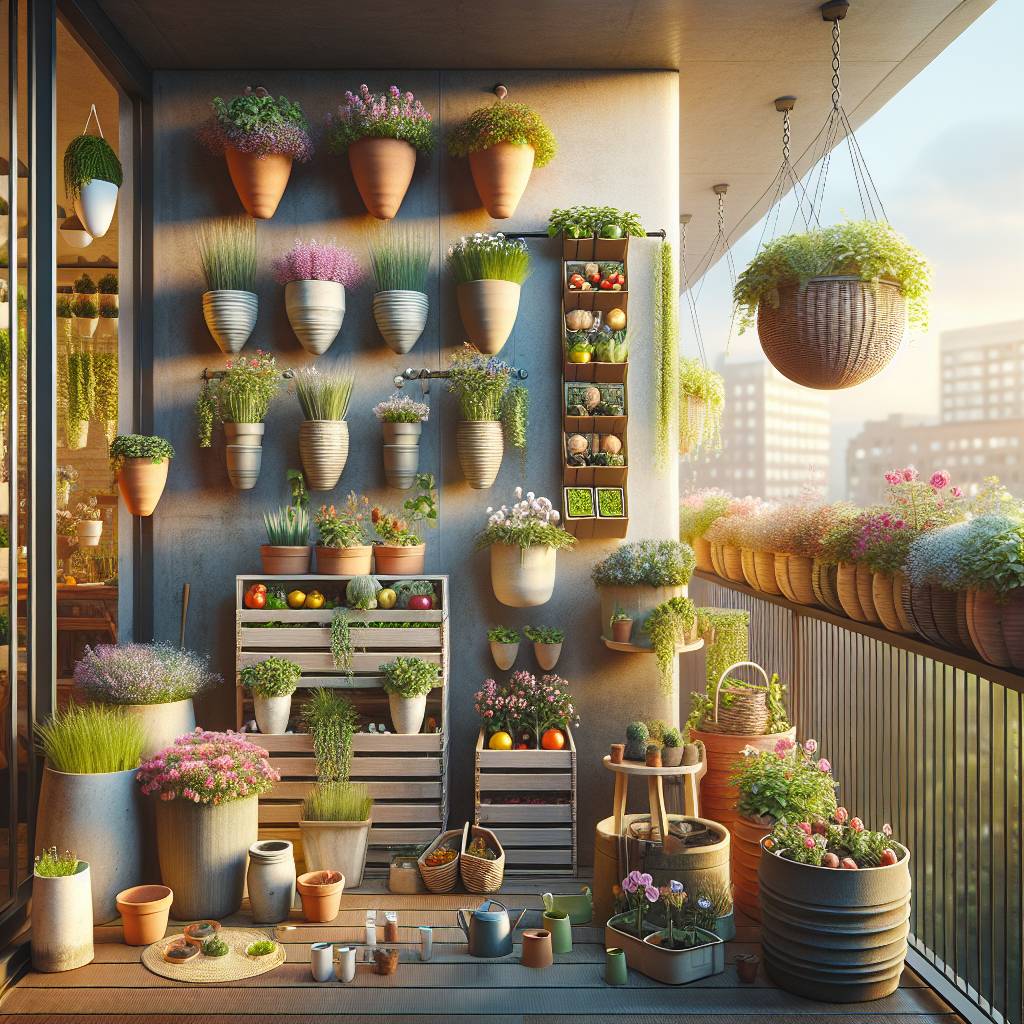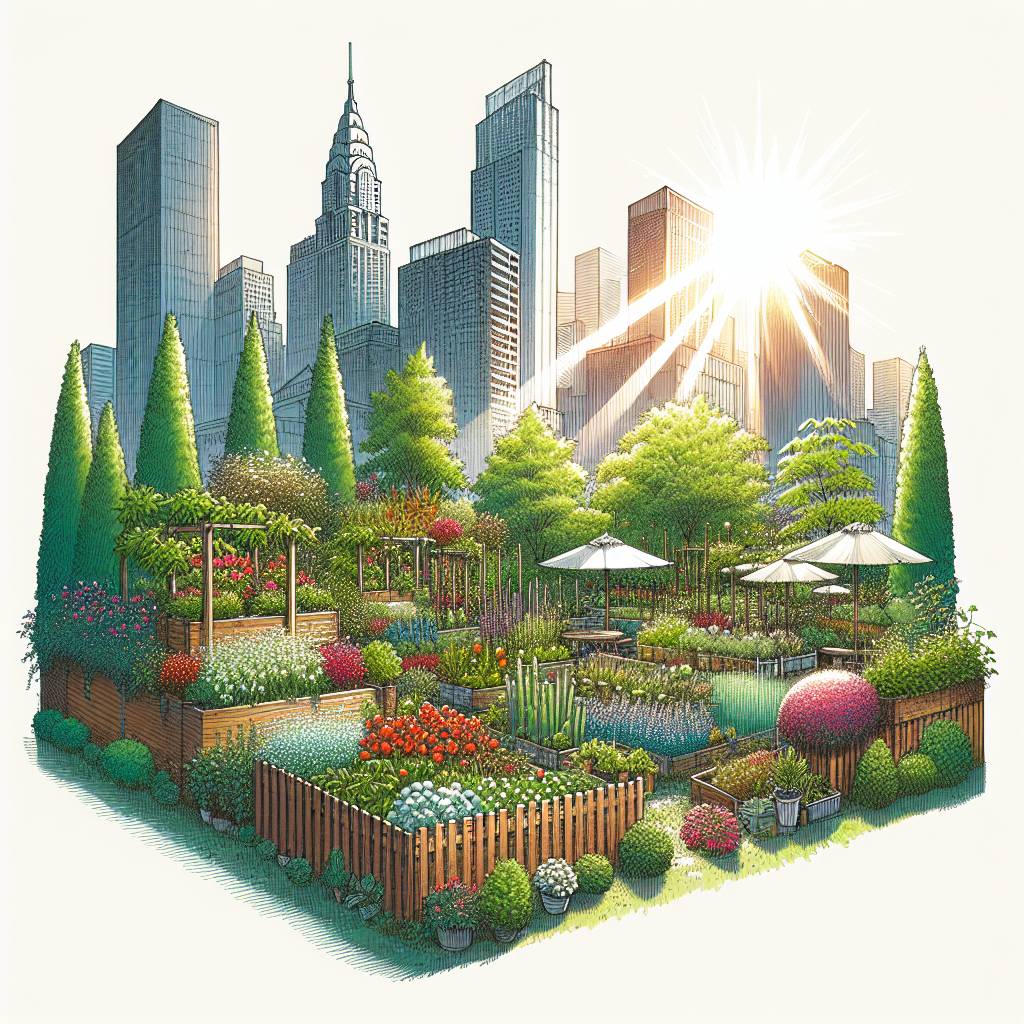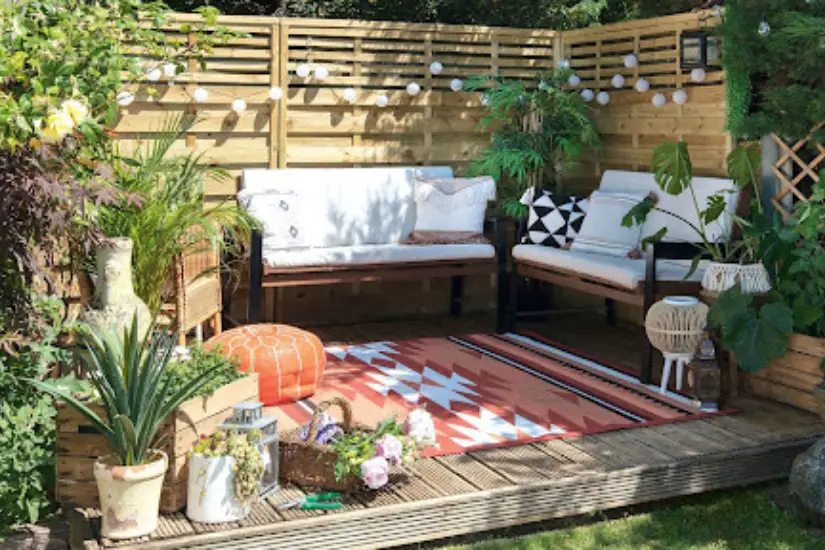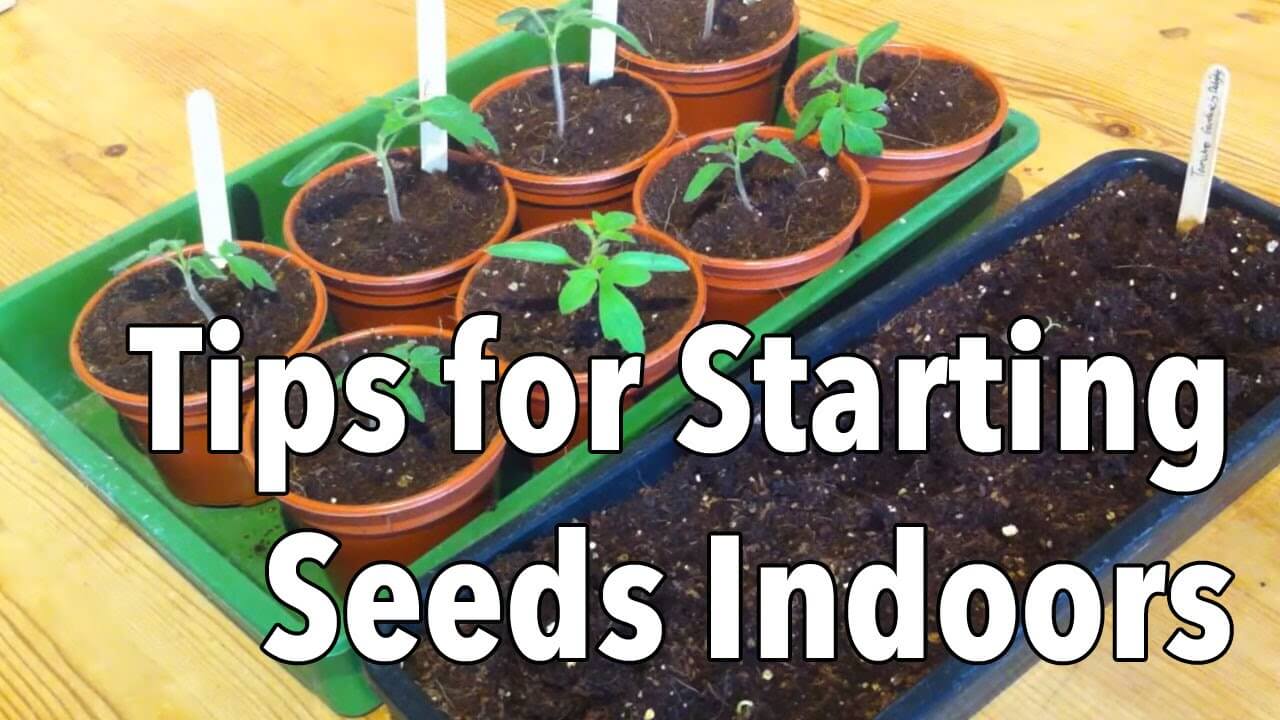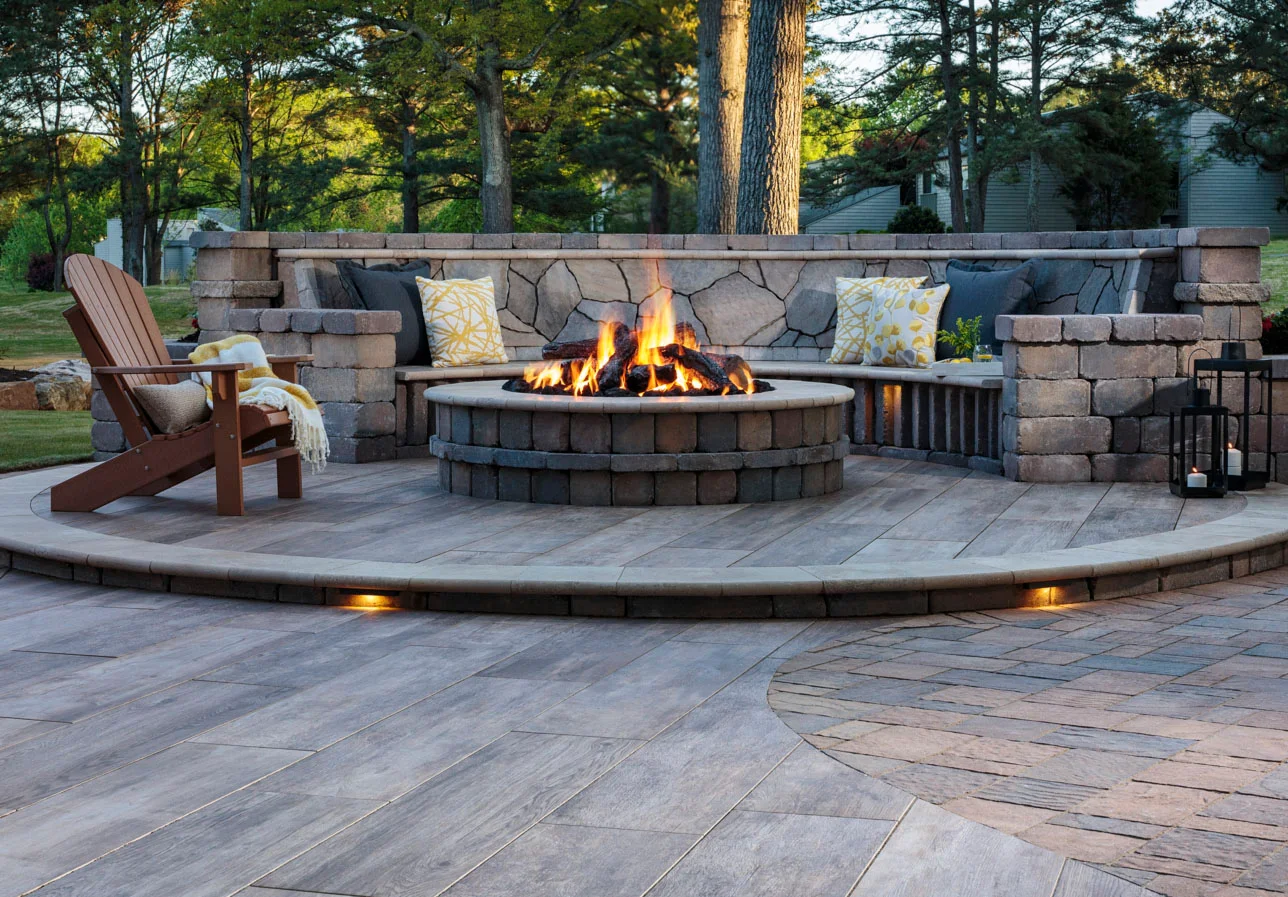The right container can make all the difference. The contrast between a flourishing garden and struggling plants often boils down to the container choice. From traditional terracotta pots to modern hanging planters, there’s a myriad of options available. Each type, including small spaces and balcony gardens, offers distinct advantages and limitations in terms of drainage, space utilization, and aesthetic appeal.
Key Takeaways
- Choose the Right Containers: Select containers that suit your balcony space, considering size, weight, and aesthetic appeal.
- Pick the Right Plants: Opt for plants that thrive in containers and are suitable for the balcony environment, such as herbs, flowers, and compact vegetables.
- Maximize Vertical Space: Utilize vertical space with hanging planters or trellises to expand your greenery options while saving space.
- Ensure Proper Drainage: Manage water drainage effectively by using containers with drainage holes and adding a layer of gravel at the bottom to prevent waterlogging.
- Regular Maintenance is Key: Stay on top of care and maintenance tasks like watering, fertilizing, and pruning to keep your balcony garden healthy and vibrant.
- Create a Pleasing Design: Incorporate design elements like color coordination, varying heights, and visual interest to create an appealing balcony garden.
Essential Considerations for Balcony Gardening
Assessing Sunlight Exposure
When planning a balcony garden, it’s crucial to assess the amount of sunlight your balcony receives. Different plants have different light requirements, so understanding your balcony’s sunlight exposure will help you choose the right plants for your space. For example, if your balcony receives direct sunlight for most of the day, you can use sun-loving herbs like basil and rosemary. On the other hand, if your balcony is shaded for a significant portion of the day, shade-tolerant plants such as ferns or peace lilies would be more suitable.
Another important factor to consider when assessing sunlight exposure and balcony gardening is how this changes throughout the year. As seasons change, the angle and intensity of sunlight hitting your balcony may vary. This means that some areas may receive more or less light at different times of the year. Being aware of these variations will enable you to make informed decisions about which plants are best suited to each area on your balcony.
Soil Selection for Container Gardening
Choosing the right soil is essential for successful container gardening on balconies. The soil in containers for balcony gardening should provide good drainage while retaining enough moisture to keep plants healthy. Look for potting mixes specifically formulated for container gardening as they often contain a blend of materials like peat moss and vermiculite that promote proper drainage and water retention.
It’s also important to consider using organic soil that contains nutrients essential for plant growth since potted plants rely solely on their container environment rather than drawing nutrients from surrounding ground soil. Adding compost or slow-release fertilizers can further enrich the soil in containers over time.
Weight-Bearing Capacity Consideration
Considering weight-bearing capacity is crucial when selecting containers and deciding where to place them on a balcony garden setup because overloaded balconies can pose safety risks due to structural stress or collapse potential. For instance, lightweight plastic pots might be suitable options compared with heavier ceramic ones especially if weight restrictions apply. Moreover distributing weight evenly across larger surface areas by placing heavy pots directly onto solid flooring rather than hanging them off railings could help mitigate potential hazards.
Maximizing Space with Strategic Container Placement
Vertical Utilization
Utilizing vertical space is crucial. Hanging baskets or wall-mounted containers are ideal options when dealing with limited space. These containers not only add greenery but also free up valuable floor area for other uses. By hanging these containers, you can create a lush garden without sacrificing precious square footage.
Grouping Containers Another effective strategy in maximizing space is grouping containers strategically. By clustering smaller pots together, you can create a visually appealing arrangement while making the most of your available space. This approach also allows you to grow various plants in close proximity, creating an attractive and diverse display within a confined area.
Placing Taller Plants at the Back In addition to utilizing hanging baskets and grouped containers, placing taller plants at the back of your balcony garden is essential for creating depth and maximizing space. This technique helps prevent overshadowing of shorter plants by ensuring that all vegetation receives adequate sunlight exposure. It also creates an illusion of depth, making your small balcony appear larger and more spacious.
Understanding Restrictions for Balcony Garden Containers
Building Regulations
It’s crucial to check the building regulations. Some apartment complexes or condos have specific rules about the types of containers allowed on balconies. For instance, some buildings may prohibit hanging containers due to safety concerns, while others may have restrictions on the overall size of containers.
It’s essential to be aware of these regulations before investing in containers for your balcony garden. Failure to comply with these rules could result in fines or requests from the building management to remove non-compliant items.
There might be guidelines regarding the appearance and uniformity of containers visible from outside the building. Therefore, before making any purchases, ensure that you are familiar with your building’s policies and regulations regarding balcony gardening.
Weight Restrictions
Another important consideration when selecting containers for a balcony garden is understanding weight restrictions. Balconies are designed to support a certain amount of weight, and exceeding this limit can pose safety hazards.
Large ceramic or stone planters filled with soil and plants can become quite heavy. Before placing them on your balcony, verify that they fall within the allowable weight limits specified by your building management or local ordinances.
Lightweight alternatives such as resin or fiberglass planters can provide an attractive solution while ensuring that you stay within safe weight limits.
Types of Plants and Containers Allowed
In some cases, there might be limitations on the types of plants permitted in a balcony garden, as well as restrictions related to container materials. Certain buildings may prohibit planting trees or shrubs due to potential structural damage caused by their roots over time.
Moreover, there could be constraints on using wooden containers due to fire safety concerns. It’s important not only to consider what type of plants you want but also whether those choices align with any limitations set forth by your housing community or local authorities.
Selecting Suitable Plants for Container Gardening
Climate and Balcony Conditions
When choosing container choices for balcony gardens, it’s crucial to consider the specific climate and conditions of your balcony. Different plants thrive in different climates, so it’s essential to select ones that will do well in your area. For instance, if you live in a hot and sunny region, opt for plants that can withstand intense sunlight without withering away.
Compact Varieties and Dwarf Cultivars In small balcony spaces, it’s important to choose plants that won’t outgrow their containers too quickly. Look for compact varieties or dwarf cultivars of your favorite flowers or vegetables. These smaller versions are designed specifically to fit into tight spaces while still providing beautiful blooms or tasty produce.
Maintenance Requirements and Growth Habits Consider the maintenance requirements and growth habits of each plant before making a choice. Some plants require more frequent watering than others, while some may need regular pruning to keep them from overtaking the entire space on your balcony. Understanding these factors will help you select plants that align with the amount of time you can dedicate to caring for them.
Choosing the Ideal Containers for Your Balcony
Evaluating Size and Shape
Evaluating the size and shape of your balcony is crucial. Consider the available space, as well as any limitations such as railings or overhead coverings. This assessment will help you determine suitable container sizes for your plants. For example, if you have a narrow balcony with limited floor space, opting for tall and slim containers can maximize planting area without encroaching on walking space.
If your balcony receives strong winds or intense sunlight, selecting wider-based containers can provide stability against tipping over. It’s essential to ensure that the chosen containers fit comfortably within the available space while allowing ample room for plant growth.
Selecting Durable Materials
When choosing containers for your balcony garden, it’s important to consider materials that can withstand outdoor conditions. Look for options made from sturdy materials like plastic, fiberglass, or metal that are weather-resistant and durable. These materials offer longevity and protection against harsh elements such as rain, wind, and UV exposure.
For instance, plastic containers are lightweight yet robust enough to endure varying weather conditions without deteriorating quickly. They also come in an array of colors and styles to complement your balcony decor while being easy to move around when needed. On the other hand, metal containers add a modern touch but may retain heat more than other materials; however they are resistant to breakage.
Considering Convenience Options
In addition to durability considerations when selecting container choices for a balcony garden, convenience should not be overlooked. Self-watering containers provide an efficient way of maintaining moisture levels in the soil by allowing plants to draw water from a reservoir below their root zone.
Moreover,lightweight options make it easier to rearrange or transport plants around your balcony as needed without straining yourself physically. Lightweight resin pots or fabric grow bags are excellent alternatives due to their portability while still providing adequate support for various types of plants.
Design Elements for a Visually Pleasing Balcony Garden
Visual Interest
Incorporating a variety of plant textures, colors, and heights is crucial. This creates visual interest and adds depth to the garden. For instance, mixing delicate ferns with bold, colorful flowers can add an interesting contrast that draws the eye.
To enhance the appeal of your balcony garden, consider adding decorative elements such as trellises or wind chimes. These not only add visual interest but also create a relaxing atmosphere as they sway in the breeze. Utilizing different types of containers like ceramic pots or hanging baskets can contribute to a diverse and visually appealing display.
Focal Points
Creating focal points within your balcony garden is essential for capturing attention. Eye-catching containers or statement plants serve this purpose effectively. For example, placing a large ornamental grass in an oversized container can act as a striking focal point that instantly elevates the overall look of your balcony space.
In addition to plants and containers, incorporating other decor elements like fairy lights or small water features can also serve as focal points while contributing to the aesthetic appeal of your garden.
Managing Water Drainage in Container Gardens
Proper Drainage Holes
Ensuring proper drainage is crucial. Without adequate drainage, plants can suffer from waterlogging, leading to root rot and other issues. Look for containers with drainage holes at the bottom to allow excess water to escape.
Containers without drainage holes trap water, suffocating plant roots and causing them to rot. This can ultimately lead to the death of the plants. When selecting containers for your balcony garden, prioritize those with sufficient drainage holes.
Using Saucers or Trays
To prevent staining or damage to your balcony floor due to excess water draining from the pots, consider using saucers or trays underneath the containers. These catch any overflow of water and protect your balcony’s surface from moisture-related damage.
Saucers also provide a reservoir for excess water that plants can draw from during dry periods. They help maintain consistent soil moisture levels while preventing potential harm caused by dripping or pooling water on your balcony.
Monitoring Moisture Levels
Regularly monitoring moisture levels in your container garden is essential for maintaining healthy plant growth. Check the soil’s moisture content by inserting your finger into it; if it feels dry about an inch below the surface, it’s time to water again.
Be mindful of environmental factors such as temperature and humidity that affect how quickly soil dries out. Adjusting watering frequency based on these conditions helps prevent both overwatering and underwatering in your container garden.
Utilizing Vertical Space for More Greenery
Vertical Garden Systems
Utilizing vertical space is crucial. Installing vertical garden systems or living walls can help maximize planting area in small spaces. These systems allow you to grow a variety of plants while taking up minimal floor space. By using the vertical plane, you can create a lush and vibrant display even in limited areas.
Vertical garden systems are perfect for growing vegetables, herbs, flowers, and even small fruit trees. They provide an efficient way to make the most out of your balcony’s limited room by expanding upwards rather than outwards. This is especially beneficial if your balcony receives only partial sunlight or shade as you can position plants at different levels to ensure they receive the right amount of light.
Climbing Plants and Vines
Another way to make the most of vertical space in container gardening is by growing climbing plants or vines on trellises or pergolas. These structures not only add visual interest but also offer support for plants that tend to spread out horizontally when grown in traditional containers. For example, tomatoes, cucumbers, peas, and beans are all excellent candidates for trellising.
By training these plants to climb upwards instead of spreading across the ground, you’re effectively maximizing your available planting area without sacrificing precious floor space on your balcony. Plus, this method helps protect delicate crops from strong winds that may be common at elevated heights.
Hanging Planters and Cascading Plants
Hanging planters are another fantastic option for creating a lush and vertical display in a compact outdoor area like a balcony garden. You can use hanging baskets or pots filled with trailing or cascading plants such as ivy geraniums, petunias, sweet potato vine, or bacopa.
These cascading beauties not only add visual appeal but also utilize the often underutilized bottom portion of your balcony’s airspace—transforming it into a green oasis full of life! Additionally, hanging planters allow you to take advantage of varying light conditions throughout the day by adjusting their positions accordingly.
Care and Maintenance Tips for Container Gardens
Checking Soil Moisture Levels
Checking the soil moisture levels is crucial. This ensures that the plants are getting adequate hydration without being overwatered. Overly dry soil can lead to wilting and stunted growth, while excessively wet soil can cause root rot. To check the moisture level, simply insert your finger into the soil up to the first knuckle. If it feels dry at that depth, it’s time to water.
It’s also important to consider environmental factors such as temperature and sunlight exposure when determining watering frequency. In warmer climates or during hot summer months, plants may require more frequent watering compared to cooler seasons or regions with milder temperatures.
Watering as Needed
Proper care of container gardens includes watering as needed based on the specific requirements of each plant. Different types of plants have varying water needs, so it’s essential to tailor your watering schedule accordingly. For instance, succulents thrive in drier conditions and should be watered sparingly, while leafy greens like lettuce may need more frequent watering.
Using a self-watering container can help maintain consistent moisture levels by allowing plants to absorb water from a reservoir at their own pace. This method reduces the risk of overwatering or underwatering due to its regulated system.
Fertilizing According to Plant Needs
In addition to regular watering practices, fertilizing container plants according to their specific needs is vital for maintaining healthy growth and vibrant blooms. Different types of fertilizers cater specifically to various plant requirements – some are high in nitrogen for promoting lush foliage growth while others contain higher levels of phosphorus for enhancing flower production.
By understanding the nutritional demands of different plant species, you can select suitable fertilizers that provide balanced nourishment tailored towards their individual needs.
Pruning and Deadheading Plants
Pruning and deadheading are essential components of care for container gardens as they promote healthy growth and prolong flowering periods. Trimming off dead or wilted flowers not only enhances aesthetic appeal but also encourages new blooms by redirecting energy towards fresh bud development.
Regular pruning helps maintain an optimal size for container-grown plants while removing diseased or damaged parts that could hinder overall health and vitality.
Final Remarks
Congratulations on reaching the end of our balcony gardening journey! You’ve learned how to overcome space limitations and select the perfect containers for your green oasis. Now, armed with essential tips and tricks, it’s time to turn your balcony into a flourishing garden. Get your hands dirty, experiment with different plants and containers, and most importantly, have fun creating your own urban jungle!
So, what are you waiting for? Go ahead and bring life to your balcony with the knowledge you’ve gained. Happy gardening!
Frequently Asked Questions
What are the essential considerations for balcony gardening?
When planning a balcony garden, consider factors like sunlight exposure, wind conditions, and weight restrictions. Choose lightweight containers and plants suitable for your climate. Ensure proper drainage to prevent water accumulation.
How can I maximize space with strategic container placement?
Optimize your balcony space by arranging containers vertically or using railing planters. Consider hanging baskets and wall-mounted planters to free up floor space. Group plants with similar care needs to make maintenance easier.
Are there restrictions for balcony garden containers?
Check your building’s guidelines on balcony gardening. Some places have rules regarding the size, weight, and material of containers allowed on balconies. Be mindful of any regulations before selecting your containers.
What are some suitable plants for container gardening?
Choose compact varieties of vegetables, herbs, flowers, and dwarf fruit trees that thrive in confined spaces. Examples include cherry tomatoes, basil, petunias, and citrus trees bred specifically for pots.
How do I choose the ideal containers for my balcony?
Consider factors such as size, material durability (like plastic or lightweight concrete), aesthetics that complement your outdoor decor style while providing adequate room for root growth.
